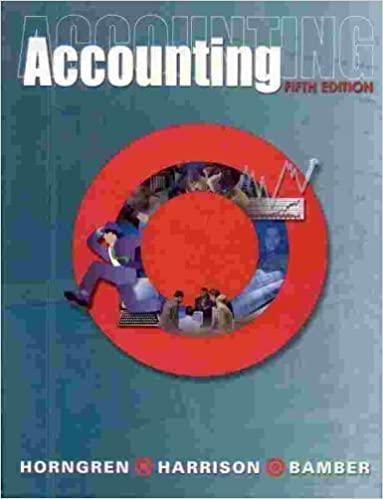P25-3A Camden Pharmaceuticals manufactures an over-the-counter allergy medication called Breathe. Camden is trying to win market share
Question:
P25-3A Camden Pharmaceuticals manufactures an over-the-counter allergy medication called Breathe. Camden is trying to win market share from Sudafed and Tylenol. Camden has developed several different Breathe products tailored to specific markets. For example, the company sells large commercial containers of 1,000 capsules to health-care facilities and travel packs of 15 capsules to shops in airports, train stations, and hotels. Camden's controller Sandra Whitney has just returned from a conference on activity. based costing. She asks Keith Miller, foreman of the Breathe product line. to help her develop an activity-based costing system. Whitney and Miller identify the following activities, related costs, and cost allocation bases: Activity Materials handling. Packaging.... Quality assurance Total indirect costs Estimated Indirect Activity Costs $180,000 300.000 112,500 $592,500 Allocation Estimated Quantity Base of Allocation Base Kilos Machine hours Samples...... The commercial-container Breathe product line had a total weight of 6,000 kilos, used 1,000 machine hours, and required 200 samples. The travel-pack line had a total weight of 4,000 kilos, used 200 machine hours, and required 300 samples. Camden produced 2,500 commercial containers of Breathe and 50,000 travel packs. Required 1. Compute the cost allocation rate for each activity. 2. Use the activity-based cost allocation rates to compute the activity costs of the commer- cial containers and the travel packs. (Hint: First compute the total activity costs allocated to each product line, and then compute the cost per unit.) 3. Camden's original single-allocation-base cost system allocated indirect costs to products at $300 per machine hour. Compute the total indirect costs allocated to the commercial containers and to the travel packs under the original system. Then compute the indirect cost per unit for each product. 4. Compare the activity-based costs per unit to the costs from the original system. How have the unit costs changed? Explain why the costs changed as they did. 5. What clues indicate that Camden's ABC system is likely to pass the cost-benefit test? 18,000 kilos 2,000 hours 2.250 samples
Step by Step Answer:

Accounting
ISBN: 9780130906991
5th Edition
Authors: Charles T. Horngren, Walter T. Harrison, Linda S. Bamber, Betsy Willis, Becky Jones





